We’ll carry on from where we left off last time.
All change for 1968! GM, Ford and Mopar all brought out new bodies for their intermediates, based on the previous underpinnings. Ford’s bodies seemed more of a gentle update, Mopar’s styles pretty much brought them up to parity with GM’s 1967 designs, while arguably GM went a bit weird and spacey, introducing a curvy fuselage shape with some funky detailing in the rear quarters of hardtops in particular.
Although I have plenty of 1969 muscle car models, this blue Road Runner seems to be the only 1968 I have photos of. There’s a ’68 GTO somewhere, and plenty of other 1968 models, just nothing else that fits this story. Revell does a lovely ’68 Chevelle, but I don’t have it.
So let’s move on to this 1969 442. A lovely, clean shape that I think of as Fuselage Done Right. A smooth progression of the body sides into the roofline, with an interesting curve at the top of the rear window. Pretty much all smooth curves, with the only sharp lines being the fender tops and wheel arch flares. This is AMT’s 2002 kit, a re-boxing of the MPC 1988 version.
In contrast, here’s a representative Chevelle. One of the many reissues of AMT’s 1969 kit. See what I mean about funky quarter windows? Pushing the boundaries. The crease at the base of the C-pillar makes a natural place to end a vinyl roof, but minimizes the fuselage look of the Olds. Or the Pontiac, as we shall see. Before any Chevelle fans chime in, I know this kit has a mixture of ’68 and ’69 cues; AMT didn’t remove the lower body chrome trim.
Here’s a similar view of another 442. A seamless blend from bodysides to roof.
Pontiac handled it this way. Buick was weirdest, but I don’t have one of them. That’s if they were even made as a kit. Moving on to Mopar…..
… the intermediate Dodge is quite conventional looking by comparison. This one’s a Super Bee with the 440 Six Pack. Kit manufacturers (Monogram here) tend to go for the ultimate version, often leaving the builder to dial things back for a lesser version. It’s a pleasant looking car, but it looks a different generation to the GM designs.
Plymouth used the same inner body but has some added shaping on the fender sides, little creases/bulges toward the tops of the fenders. This one’s based on an older AMT kit.
Or if you don’t need the full-fat GTX, there’s always the Road Runner. This is the much sought-after (and long-gone) Johan kit, said to be the most accurate rendition of this body.
Then we come to Ford. Personally I love the shape of this fastback roof. I think I showed you the green one last time. Here’s the red one.
For racing though, it apparently needed some refinements. The Talladega model gained a longer, lower front end. I wouldn’t have thought it would have made that much difference – but then I’m not an air molecule…
Not as radical as Dodge did with the Daytona, or Plymouth with the Superbird. AMT and Revell both offer kits of the Daytona; this is the Revell Daytona.
And here’s the Superbird, an old Johan kit.
1970 brought substantial changes to the GM bodies, and another total overhaul for Ford. Plymouth got a neat update, while as we’ll see the Dodge boys seem to have been using something weird – there was a lot of that going around.
Chevy’s shape was more conservative than before, but now the SS could come with a 454. Guess sometimes 427 just isn’t enough cubes.
Pontiac’s GTO got a wilder front end. The headlights were exposed again, and placed in separate surrounds, and the split grille narrowed. Remember, BMW was largely unknown then. No separate bumper. And the 428 became a 455 – because bigger is better, no? It also gained fender eyebrows on the sides, in this execution rather reminiscent of the gullwing Mercedes. Pontiac seemed to be moving away from clean to cluttered.
Oldsmobile stamped a muscular haunch into the rear fender, adding some visual interest to the rear quarter, with the rest of the body largely unchanged. No need for more, it still looked the best of the four. It also gained a 455. No relation to the Pontiac 455, of course; it’s an Oldsmobile after all. That used to mean something back then.
Buick’s body went conservative; perhaps an over-reaction to the previous design? But what they took away in shape, they made up in graphics. And horsepower, too. If 350 wasn’t enough to get the job done, there were the Stage 1 and Stage 2 versions…
As an aside, what was it with GM and the number 455? Pontiac, Oldsmobile and Buick, had for (I think) the first time ever, engines of the same capacity – all totally different, mind you. This numerical commonality would continue downrange, with a variety of 350s from the various divisions. First step towards total mechanical commonality, or coincidence?
This is the new Ford shape for 1970. At last count I’ve made six of these; tells you how much I love it. (The others are red, yellow, purple, and two shades of orange, in case you were wondering)
Plymouth planned off the fender bulges (which reappeared, larger and lower, over at Pontiac!) They also squared up the front and rear ends, introducing the front-end theme that was to appear on the new ’71 coupes, while retaining the separate bumper. This GTX has an openable hood scoop, to wow bystanders at the lights. Wonder if it made a cool, spacey sound as it opened? Hey, they did the beep-beep horn…..
Also available on the Road Runner.
I mentioned Dodge having a go at something weird. Here’s their ’70 front end. Kind of okay on the hardtops, weird on the sedans, and downright incongruous on the wagon. But that was Dodge for 1970.
We’ll end there. 20 photos is enough, surely? Next time I’ll show some more from these years, and cover 1971 to ‘74. Beware of the colours…
























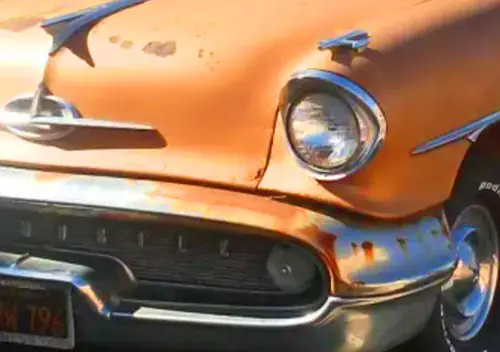
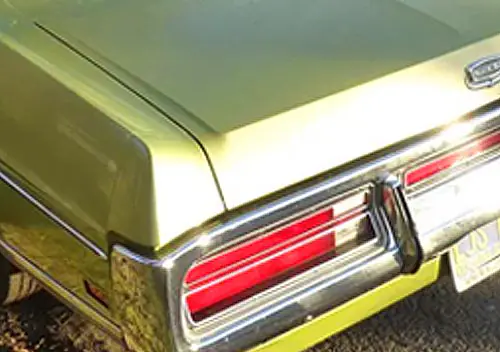
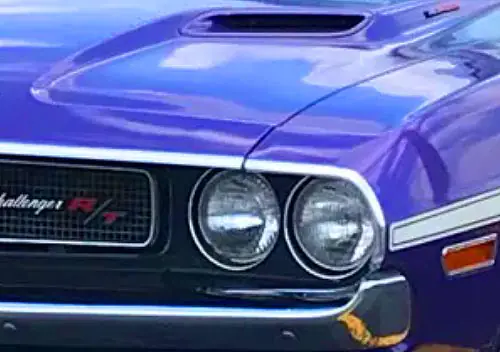


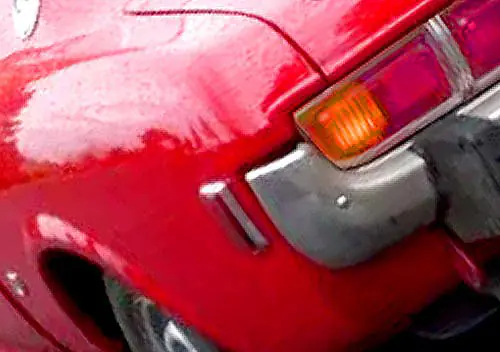

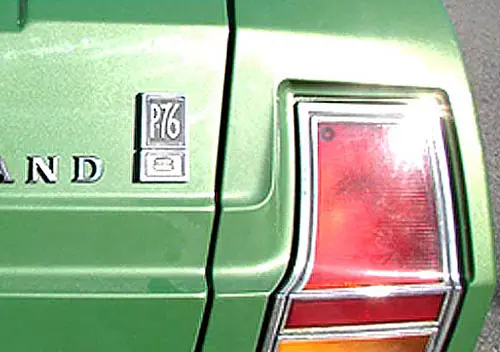
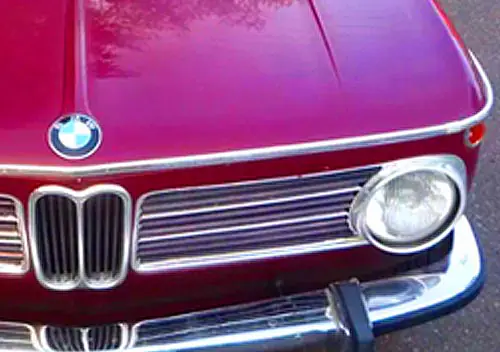

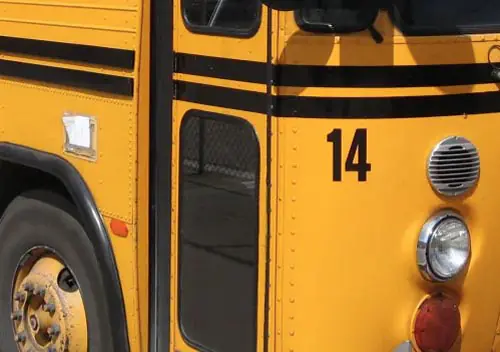
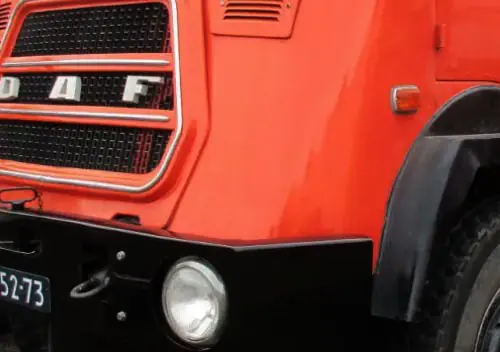
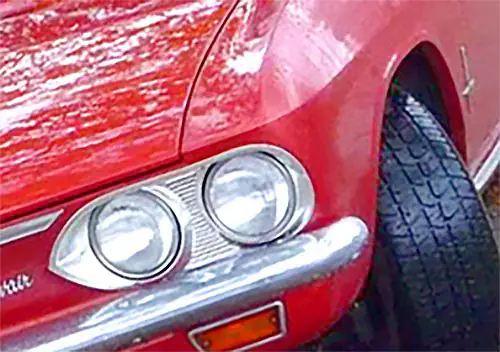
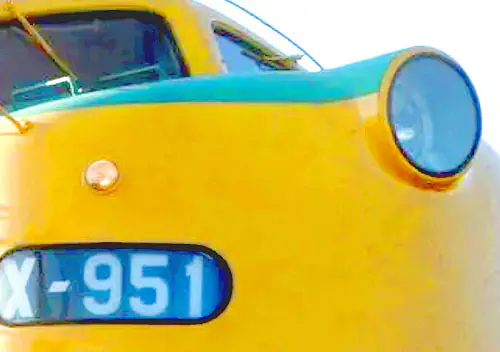
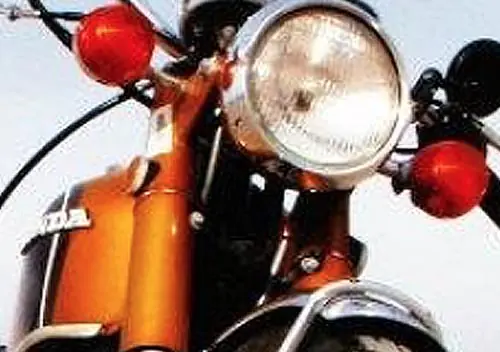
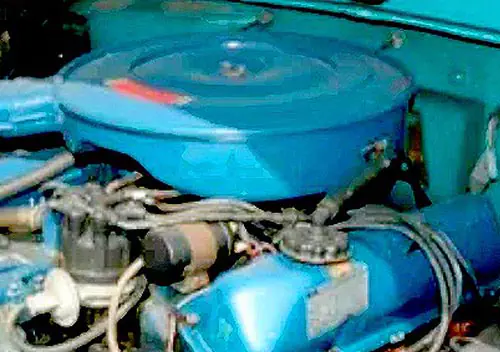
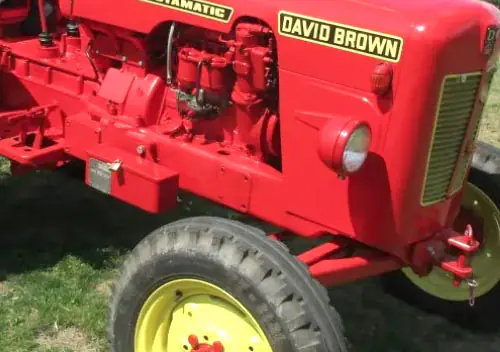
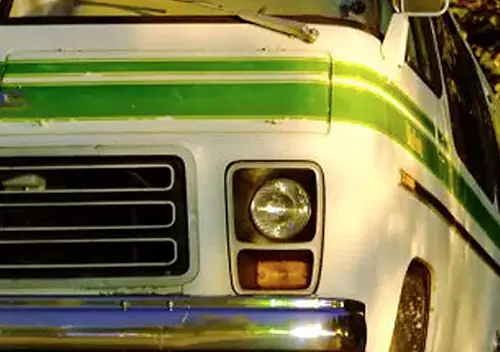

Good work Peter. I am partial to the ’69 442’s and the ’70 Torino. The Aussie Falcon or whatever Mad Max drove was a downsized styled version of this maybe?
Thanks Dave. Yeah, I love those 442s too – you guessed?
The Aussie ‘Mad Max’ Falcon was a body with similar styling themes to the Torino but as far as I know no actual parts commonality. It’s on the 111″ wheelbase from the old Falcon, so uses the same basic platform as the Torino. Not particularly popular at the time, but nowadays: iconic.
yes I was referring only to the profile and some styling elements. When that ’70 Torino came out Ford advertised them quite well in Hot Rod magazine. Even tho my brother Ron came back from Viet Nam and purchased a Fathom blue ’70 Chevelle SS396, I still preferred the Torino styling and still do today but even more so.
Actually 400 was the first displacement shared by the BOP triplets in 1967. I assume that was driven by corporate raising the A-body displacement limit to 400, apparently initially Chevy said that’s OK we have the 396. The mid-priced 3 responded with engines advertised as 400’s. Next came the 350’s Chevy was the first out of the gate in 1967 but the following year the mid-priced all had engines advertised as 350 even if only one of them was actually 350 cu in, the Buick is a 349 while the Pontiac is a 354. Finally it was the 455’s for 1970 which again were not all 455 cu in, since the Poncho is really 456, and over at Chevy they finally brought out an engine marketed as a 400.
Why Chevy’s new top dog for 1970 was marketed as a 454 instead of a 455 is interesting. Maybe the Chevy guys were sticklers for sticking to the math? No that can’t be it since they also introduced the 402 that year, but still sold it as a 396.
Hey thanks for the correction, Scoutdude. I knew about the Pontiac, and if I’d thought long enough might have remembered the Buick, but was unaware of the Olds. Not paying enough attention, I guess.
Displacements are funny things; a number in itself is devoid of meaning, but we attach all sorts of meanings and connotations to them. Sometimes it’s for corporate internal regulations (wasn’t Pontiac’s 326 actually a 336?), sometimes to avoid sounding the same as a previous engine (Ford’s 351 is actually a 352). And sometimes you really have to wonder – was it really worth Chevy adding six inches to the 396 and not telling anyone? Must be a reason there…
Some times it does make some sense like Ford calling the 351 (W) and 351 instead of a 352 since they already had done a 4″ x 3″ FE. (But then they did the 351C and eventually 351M to really confuse things.) The FT 391 is another case where they lied about the displacement apparently to denote that the FT was significantly different than the FE.
I have to assume that at GM the 350 thing and potentially the 455 was due to edicts from above, certainly the 400’s were responses to corporate mandates.
But the 402 is definitely curious. A measly 6 cu in certainly wouldn’t have made for a significant change in output.
Conventional wisdom is that marketing didn’t want to mess with their well known and respected “SS 396” branding so they kept marketing it as such. I guess it also could have been to save the money and potentially time to tool up for some 402 badges. That of course doesn’t explain why they created the 402 in the first place.
My theory is the big block engineering team had got wind of the 400 small block and just couldn’t let the small block team one-up them. The quick and easy way to >400 cu in was of course to do that .030 over 396. So my guess is they got far enough down that path, ie had ordered up the pistons and rings, before marketing (and maybe trim) got wind of it.
I had to burst out laughing when I read your theory of how the 402 came to be. Just because it sounds so plausible!
The ’69 Pontiac TransAm (or GTO) was the best looking car ever made. Period!
In ’69, I was told to trade my inherited ’66 American Ambassador (14″ wheels!) for a new company car. Being young and sporty, I chose a ’69 Chevy Malibu (they wouldn’t let me choose a Pontiac) which was a smaller model than my insurance employer usually purchased. After much handwringing, Corporate agreed and I drove it for the duration of that job.
Despite the small block, its resale was so good that Corporate mandated intermediate sized cars for field work in most of the country.
Enthusiasm! I’ve got another GTO but couldn’t find it in time for today.
Interesting story about your Malibu and your employer’s decision to downsize to intermediates.
I built a ‘69 442 back when it was a current model model … definitely not an AMT, but I didn’t think it was MPC either. Did JoHan also make one? Mine went through a few iterations and I seem to remember painting green, then orange. Or maybe the other way around? Definitely not up to Peter’s level of quality, though I was only 13 years old …
Good memory JoHan had the Oldsmobile promo contract back then so the assembly kits were derived from that. Once JoHan went belly up in 1988 MPC made a new tool for the ’69 442 and AMT purchased that and continues to periodically release it.
Thanks. Now if I could only remember where I put my car keys 5 minutes ago, instead of useless trivia like a model kit from almost 60 years ago.
Sorry, a bit slow getting back to you (even if it is 9am here!). Thanks Dave for stepping in. Yep, sounds like Johan.
Hey, my models at 13 weren’t like this either. And I repainted several of my early builds too. These days I just build another one!
The lede photo of the purple 442 with white walls, is the right hook for another fun post, with a bit of an education built-in. Thank you, sir!
Thanks! Sometimes I find it hard to choose a lede photo, and once Rich changed it on me (his prerogative). For this story it was either going to be a 442 or a Torino. They’re my favourite designs of this era. I figured my Torinos have had enough time in the sun, so the 442 was it.
And the purple one because purple – enough said!
Interesting analysis of the groundbreaking 1968 generation of the intermediates from the Big Three. There is no denying that this was a watershed moment when the market began turning to the more sensibly sized intermediates, in reaction perhaps to the excesses of the full-size cars on sale during these years.
GM led the pack, capitalizing on the trend by perfecting first the muscle car and then the personal luxury coupe formula that became so dominant in the Seventies. I often feel that the 1968-72 GM mid-size offerings are the subjects of unearned praise, though, with too much emphasis on the coupes, while the 4-door models seemed unresolved.
Among the models shown here, I really like the blue Olds 4-4-2 coupe best. Whether it’s the color, lighting, or photographer’s perspective, it seems to eliminate some of the awkward heaviness of the rear flanks seen in some of the photos in Aaron Severson’s recent post about this model.
I agree the appearance of the 1968-69 Chevelle suffered from the oddly shaped rear quarter window. The profile view of the 1970-72 coupes is better in comparison, but still not wholly resolved. I do like the red SS shown here and the front three-quarter view is perhaps its best angle.
I may be one of the few who likes the 1970-72 GTO/Lemans better than the 1968-69 forerunner. The visible headlamps are less gimmicky and broader tailights emphasize the width of the car. I love the gold in this application – a perfect period color, as my aunt had a 1969 Catalina in the same shade.
Oddly enough, in my mind, the Skylark may have started out as the ugly duckling in 1968-69, but in my opinion the 1970-72 models became the most handsome of the A-bodies with their new, more conventional lines. In a darker, more conservative hue than the chrome yellow shown here, I might be able to make this case more persuasively.
I like the Mopars for their more conservative lines, too, and the four-door models are equally attractive. They were perhaps the ultimate musle carsThe Plymouths trump the Dodges here, especially with that weird 1970 front end.
Ford seemed to be the slowest to adjust to the changing market dynamics, struggling to field a decent competitor that didn’t belie its Falcon roots. They were also perhaps the most successful in growing sales and share of their full-size cars by capitalizing on the brougham faux-luxury trend, so perhaps it’s understandable that they diverted resources to the bigger models. Still, the Fairlanes and Torinos are attractive, although I disagree about the fastback – sorry, it’s a little too ungainly, kind of like the Rambler Marlin. I like the more formal two-door roofline much better, thanks.
Thanks William. You’ve given me a lot to comment on! This carries on from my last story, and it wasn’t until I sat down to write it that I realized that the Big Three’s intermediates all changed for 1968. That said, it seemed natural to compare their efforts, though that wasn’t the original plan.
I totally agree about the GM sedans being unresolved; the C-pillar area just doesn’t seem right, making them more awkward than the competition’s sedans. But they were really style leaders with those coupes.
I’ve read that the tooling for these models isn’t always totally to scale, but sometimes details are fudged a bit to look more ‘correct’ in scale. Now I’m no engineer, and self-taught as an artist, but I wonder whether your comment on the lede photo Olds not having that ‘awkward heaviness’ might be indicative of some tinkering on the part of Johan? Just a thought. I didn’t go out of my way to minimize it, and don’t consciously go out of my way to find a flattering angle.
That Buick is only bright yellow because it’s a GSX, and yellow was the most interesting (to me) colour it came in. As usual, they kitted the top performance version, and in those days I tended to stick more to building the kit as it came. I agree it would look quite attractive and prestigious in a less pretentious color.
These are all great, Peter – and I especially enjoyed reading your take on the styling themes from the Big Three on their intermediates from these three model years. I’m starting to appreciate the Torino fastbacks of these years a bit more than I had before.
Being a fan of the semi-fastback GM coupes was always going to be a given for me (in varying degrees across the different makes), but I also now appreciate Chrysler’s offerings – like you said, more in line with GM’s outgoing ’67 designs, aesthetically.
Nice work and post!
Thanks Joseph. My approach to these stories varies; sometimes I focus more on the history of the real thing (which feels a bit weird because unless it’s Japanese, you guys know more than I do!), sometimes more on the style and my personal reaction to it, sometimes more on the actual model kit I started with, or the paint colour used. Or maybe just something tangentially connected. I don’t always have a definite approach in mind going in; I just start writing and see what happens. This time with all three rebodying their intermediates for ’68, a compare-and-contrast approach seemed natural.
While I’ve compiled a list of photos for the next story, I haven’t started writing yet, so it could go anywhere! Knowing you like music, I just happened to be listening to this band…
Think that’s bad? If I remember correctly, Chevy actually offered two different engine designs called the 400. One was a 396 big-block “rounded up” to 400 in ’71, the other was a stroked and bored small-block. One had to look under the hood on a Chevy with ‘400’ emblems to see which motor it got.